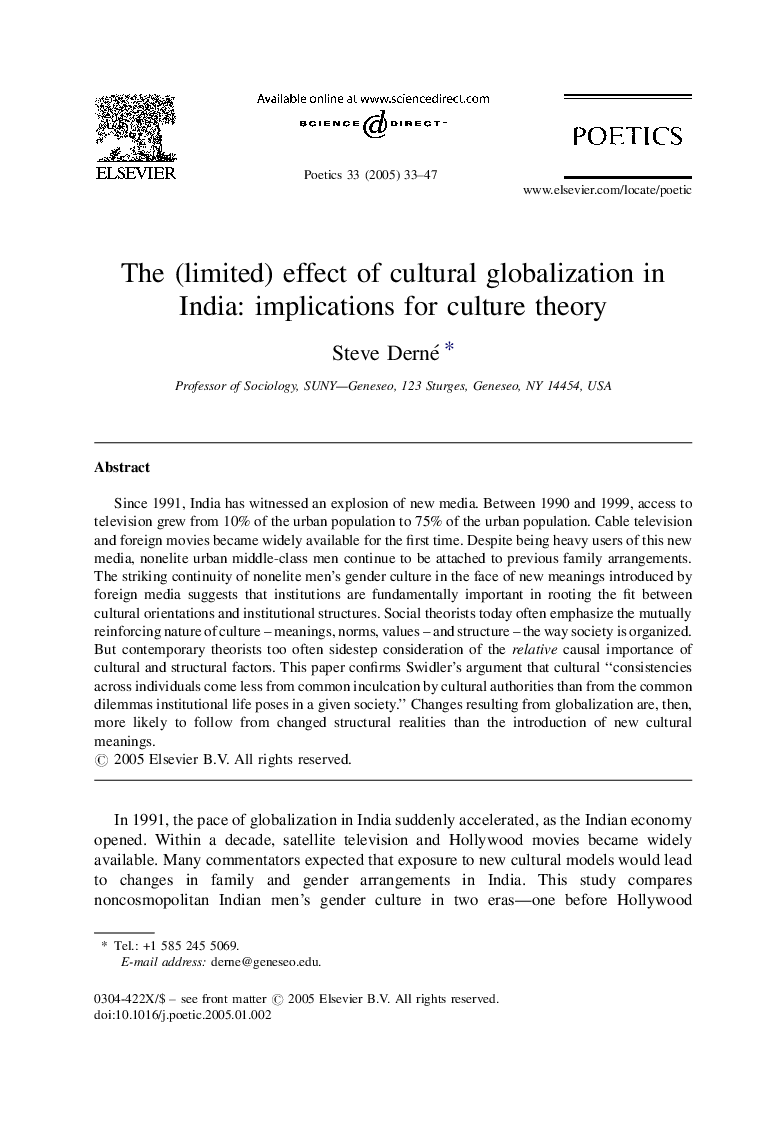| Article ID | Journal | Published Year | Pages | File Type |
|---|---|---|---|---|
| 10521427 | Poetics | 2005 | 15 Pages |
Abstract
Since 1991, India has witnessed an explosion of new media. Between 1990 and 1999, access to television grew from 10% of the urban population to 75% of the urban population. Cable television and foreign movies became widely available for the first time. Despite being heavy users of this new media, nonelite urban middle-class men continue to be attached to previous family arrangements. The striking continuity of nonelite men's gender culture in the face of new meanings introduced by foreign media suggests that institutions are fundamentally important in rooting the fit between cultural orientations and institutional structures. Social theorists today often emphasize the mutually reinforcing nature of culture - meanings, norms, values - and structure - the way society is organized. But contemporary theorists too often sidestep consideration of the relative causal importance of cultural and structural factors. This paper confirms Swidler's argument that cultural “consistencies across individuals come less from common inculcation by cultural authorities than from the common dilemmas institutional life poses in a given society.” Changes resulting from globalization are, then, more likely to follow from changed structural realities than the introduction of new cultural meanings.
Related Topics
Social Sciences and Humanities
Arts and Humanities
Arts and Humanities (General)
Authors
Steve Derné,
